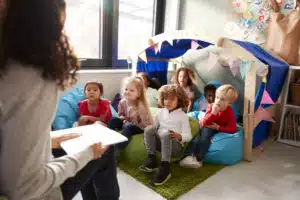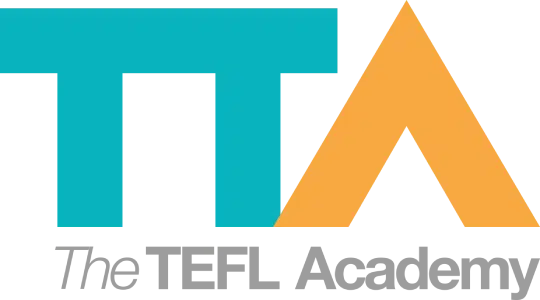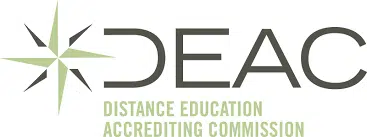The Power Of Authenticity In EFL: Engaging Students For Real-World Success
Join a global community of over 200,000 TEFL teachers working throughout the world! Enrol me!
authenticity
noun [ U ]
uk /ˌɔː.θenˈtɪs.ə.ti/ us /ˌɑː.θenˈtɪs.ə.t̬i/
the quality of being real or true
Authenticity is key for making content relevant, relatable and engaging for students. Random grammar exercises unrelated to real life often fail to engage digital natives (those born in 1980 and beyond), and even those who did not grow up immersed in technology may find their minds wandering.
Read more: The Challenges Of EFL Teaching Today
Let’s face it, the 21st century has us glued to our smartphones, and anything that doesn’t immediately catch our interest is quickly scrolled past, ignored, or forgotten.
That’s why authenticity matters. It’s the difference between passive learning and active participation.
But beyond motivation, authenticity helps develop crucial 21st-century skills that students need to thrive:
critical thinking, creativity, communication, collaboration (known as “the 4Cs”), and digital literacy.
Using real-world materials encourages learners to apply them in meaningful contexts, preparing them for life and work in a connected, fast-changing world.
So, how do we bring authenticity into our classrooms?
It’s simpler than you think. Anything that reflects real life is authentic.
This means that authentic materials in teaching English are simply resources you bring into your classroom that were not specifically designed for teaching.
Their use in the EFL classroom helps learners see the relevance of what they are learning in life beyond the classroom.
Authentic resources offer tons of options to work with. Real-world content includes role-plays and practical language for use in everyday situations, as well as media that your students consume, such as YouTube videos, TikToks, podcasts, and social media posts, down to restaurant menus, maps and brochures.
When you’re planning lessons, consider the topic and choose materials and activities that mirror your students’ lived experiences.
According to research, students stay more motivated when teachers use examples that connect to their everyday lives, especially when the situation or experience is already familiar to them.
This means that your teaching approach is student-centred since you are teaching with the student in mind and tailoring your lessons to their needs.
Read more: How Can I Make My Classroom More Learner-Centred?

Planning with purpose
Before you can teach, you must plan.
Planning with the end goal in mind (known as backward design) is key. This means identifying what students should know by the end of your lesson and/or course. That means that their learning outcomes are defined before teaching begins. This approach ensures continuity and coherence in your teaching and supports authentic learning.
Select appropriate materials by aligning them with your students’ interests. If you know that the majority of your class loves pop music, choose their favourite songs for use in your lessons, or play a clip from a well-known movie and use it to focus on a language structure or for comprehension questions. This makes learning relatable and fun.
Read more: 9 Amazingly Effective Songs To Teach English In The Classroom
Supporting learners
Supporting learners means giving them the tools they need to be successful. Using authentic materials means dealing with language that can be messy, confusing, or not designed for English learners.
Teachers need to select the right parts, simplify where needed, and offer support so that learners can access the material without making it too easy.
There are different ways to do this:
- Pre-teach vocabulary or key phrases: Introduce difficult or important words before reading or listening to help students understand the main ideas.
- Chunk up into smaller parts: Break longer texts or listening passages into manageable sections to avoid overwhelming learners.
- Use visuals and context clues: Support comprehension with pictures, diagrams, gestures, or surrounding text that provide hints about meaning.
- Pair work and group work: Encourage students to collaborate and learn from each other.
- Follow up with practice activities: Reinforce new language through exercises, discussions, or role-plays that allow students to use what they’ve learned in context.
It’s not only the teacher who can bring resources into the classroom. Teachers can invite students to bring their own resources, which boosts accountability for their learning and increases relevance.
Cultural considerations
What makes English so rich is the vastness of dialects, contexts and accents that colour it, but textbooks can’t speak and relay the variety of English accents out there. However, a movie, TV show or radio broadcast can.
Read more: Three Ways To Teach English With Movies
Your EFL classroom may have students from diverse backgrounds, so teachers should choose culturally appropriate and representative materials that avoid stereotypes.
When teachers really get where their students come from, their cultures and how that shapes the way they learn and act in class, they can adjust their teaching to be more welcoming and respectful.
Reflecting students’ lived experiences instead of stereotypes helps build respectful interactions.
Read more: Representation In ELT Materials And EFL Classrooms
Teachers should enhance culturally responsive teaching by using a constructivist approach, which focuses on connecting new ideas to what students already know. This means building lessons around students’ personal and cultural strengths to make learning more meaningful and relevant.
Practical ways to do this include:
- getting students to share music or stories from their country to expose the classroom to different cultures;
- using diverse and inclusive resources that reflect the cultural diversity of the student population (for example, books, videos, and articles created by or about people from the students’ cultures);
- including students’ cultural expressions (e.g., idioms, proverbs or sayings) into lessons by inviting them to write or speak about their traditions or community experiences.
These strategies help differentiate learning and build an inclusive classroom environment, which builds stronger relationships between teachers and students, and among the students themselves.
Read more: 5 Ways To Make Language Learning Meaningful
Using technology
Technological innovation has forever changed our lives, including the education landscape. Integrating tech in the EFL classroom allows for more diversity in lessons and enhances student engagement and collaboration.
Digital resources are widely available, making it easier than ever to bring real-world language and culture into the classroom.
Students today value flexibility and want more control over when and how they engage with learning materials. Authentic tasks that let learners explore real-world content related to their interests answer their need for choice and autonomy.
Here are some practical ways to support this student-driven approach with authentic materials, plus some engaging tech tools to keep things lively:
- Ask students to show a favourite app on their phone and explain how they use it. This can lead to discussions about daily life, habits, and cultural differences in tech use.
- Students compare how technology is used in different countries and swap experiences. For example, compare Lyft in America with Bolt in Europe, or WeChat in China with WhatsApp or Telegram in other countries.
- Gamify learning by using apps such as Kahoot! or Quizizz to review vocabulary, grammar, or key phrases in a fun, interactive way.
- Start a class blog for writing practice and let students maintain their own posts, comment on each other’s work, and share stories or experiences.
- Use translation tools to compare phrases in different languages, check meaning, or explore how automatic translations sometimes miss cultural nuances.
- Facilitate language exchange using online platforms like Google Meet or Zoom by pairing students with English speakers or learners from other countries to practise real conversations.
Read more: 9 Ways To Make Learning Easier For Our EFL Students
Even more ideas to bring the real world into your classroom
Food
- Bring in menus from local restaurants if you are in an English-speaking environment, or printouts of English menus if you aren’t. Students can learn authentic dish names and can use the menus to role-play a restaurant.
- Discuss personal and cultural eating habits.
- Watch a documentary like Supersize Me to initiate a discussion on fast food and dietary habits.
Current events
- Watch an English news broadcast on YouTube. Students can write stories about current events in their town or country and act out a broadcast for their classmates.
- Listen to the news on an English radio station.
- Use real online news (articles, headlines, or short videos) to spark discussions, practice reading skills, or explore current events.
Family
- Ask students to share a photo from their phone of family, friends, or someone important to them, and introduce that person to the class.
- Find news articles online about unusual or interesting families (e.g., blended families, LGBTQ+ families, polygamy or polyamory) and do a gapped reading.
Travel
- Collect and bring English travel brochures to class to spark conversations about places, culture, and travel experiences. These can be used to teach vocabulary.
- Students look up travel itineraries online and compare prices. They can be tasked to find the cheapest, most direct or most scenic route to a certain place.
Authenticity should be a part of every EFL classroom. No matter the topic, there are always authentic materials and activities that can connect classroom learning to the real English-speaking world outside.
Read more: How To Use Authentic Materials With Lower Level Learners

When lessons reflect students’ lives, cultures, and interests, learning becomes more meaningful, motivating, and effective.
By bringing authentic language use into your classroom, you help bring English to life, so students don’t just study English; they experience it.
Invite the outside world in, and watch your students’ confidence soar!
Accreditation & Quality Assurance
The TEFL Academy was the world’s first TEFL course provider to receive official recognition from government regulated awarding bodies in both the USA and UK. This means when you graduate you’ll hold a globally recognised Level 3 (120hr) Certificate or Level 5 (168hr) Diploma, meaning you can find work anywhere and apply for jobs immediately.
 United States
US
United States
US












